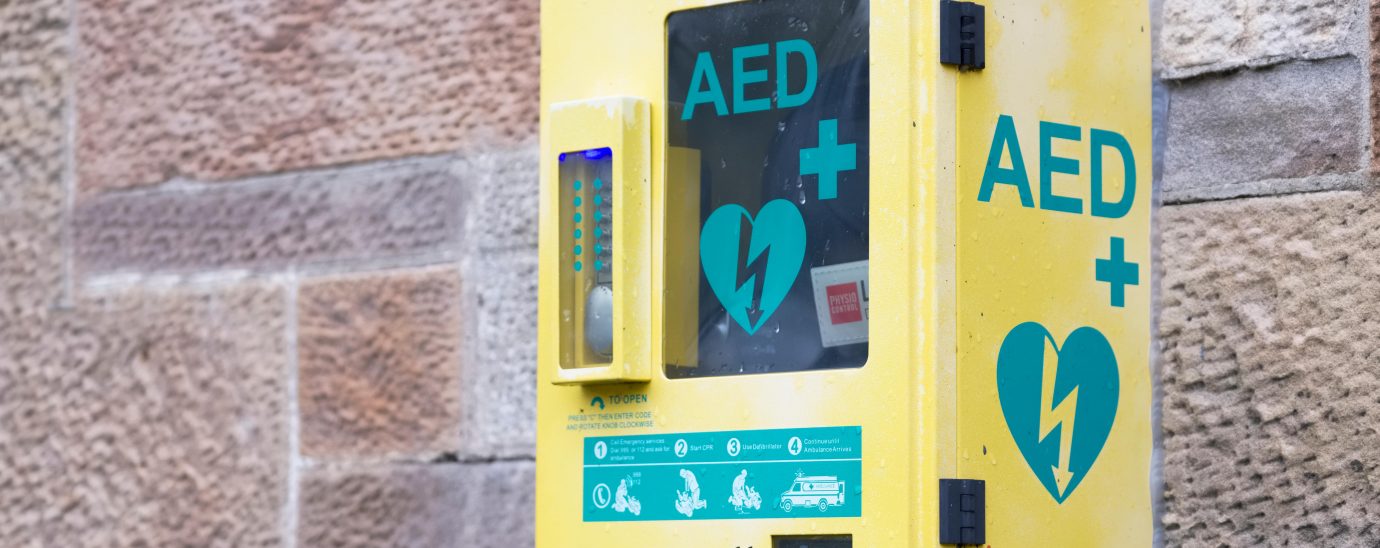defibrillators: the smart technology that is saving lives

Matthew Margetts, Director of Sales and Marketing at Smarter Technologies, discusses how connected technology can ensure defibrillator technology is fit for purpose.
In June, football fans around the world watched in horror as Christian Eriksen collapsed suddenly under cardiac arrest during Denmark’s Euros opener. Eriksen survived and has since been fitted with an implantable cardioverter-defibrillator (ICD). If one positive can be taken from this incident, it’s that people are now more aware of this issue and are campaigning to have life-saving defibrillators installed in public buildings, schools, sports clubs and designated shops.
According to the British Heart Foundation, more than 30,000 cardiac arrests happen outside of hospitals in the UK each year; fewer than one in ten people without defibrillation or CPR survive. Swift use of a defibrillator can mean the difference between life and death if someone suffers a cardiac arrest outside of a hospital.
What is a defibrillator?
A defibrillator is an advanced medical tool that can restore a heart’s normal rhythm if it stops beating or starts to fibrillate. It delivers a high energy electric shock to the heart through the chest wall and is an essential life-saving tool for someone who is suffering a cardiac arrest.
Known as PADs (public access defibrillators), there are thousands of defibrillators installed across the UK in public areas such as parks, workplaces, high streets and sporting venues. Bystanders can use these portable, battery-operated devices in case of emergency.
Why are defibrillators so important?
Cardiac arrest occurs when a person’s heart suddenly stops beating. It can happen to anyone at any time. Unless the person is treated within minutes, they have a high chance of dying since blood is no longer being pumped to the brain and other parts of the body. Quickly shocking the heart with a defibrillator can save a person’s life after cardiac arrest.
Research led by Dr Myron Weisfeldt of Johns Hopkins University explored whether a significant proportion of lives could be saved if bystanders used defibrillators before emergency medical services arrived. Their analysis of data collected between 2011 and 2015 in the United States and Canada found that there is a greater likelihood of survival when a bystander used a defibrillator (67%) rather than waiting for emergency medical services to shock the heart (43%). The more time that elapsed before emergency medical services arrived on the scene, the greater the benefit of bystanders using the PAD.
“We estimate that about 1,700 lives are saved in the United States per year by bystanders using an AED,” Weisfeldt said.
When it comes to administering a defibrillator, seconds can save lives:
- If a defibrillator is used within the first minute, the survival rate can be up to 90%
- If used within the first 3 to 5 minutes, the likelihood of survival is roughly 74%
National statistics in the UK show that the average response time for ambulance services in England was 7 minutes and 19 seconds in February 2020. That’s why using a defibrillator while you wait for the emergency services to arrive could very well save a life.
The smart way to save lives
Installing public defibrillators is the first step in reducing the risk of cardiac arrest deaths. Step two involves ensuring that these devices are in good working order at all times. In order for defibrillators to perform as expected, any problems, errors, or maintenance need to be attended to as a matter of urgency.
The simple way to do this is to use a tag and sensor solution to monitor defibrillators in real time to ensure that they are ready to save lives. Equipped with IoT sensors, a PAD’s condition can be monitored for any damage or dysfunction so that it can be replaced timeously. The data from each device and cabinet is sent via a connected network to a tailored dashboard that can be accessed from any smart device, at any time. Tracking these assets will help to alert of any preventative maintenance that needs to be carried out, helping to extend the equipment’s lifespan and life-saving potential.
READ MORE:
- Creating a cybersecurity culture in the workplace
- Proofpoint and Ponemon Institute reveal skyrocketing phishing costs
- Ethical phishing in the NHS
- Cybersecurity: the crucial double check
Another benefit of smart tracking and sensor technology is establishing the location of public defibrillators. If every defibrillator were to be equipped with smart sensor technology, it would be easy to create an online database of every public defibrillator using GPS data.
With proper maintenance and tracking, defibrillators help everyday members of the public to save lives.
For more news from Top Business Tech, don’t forget to subscribe to our daily bulletin!
